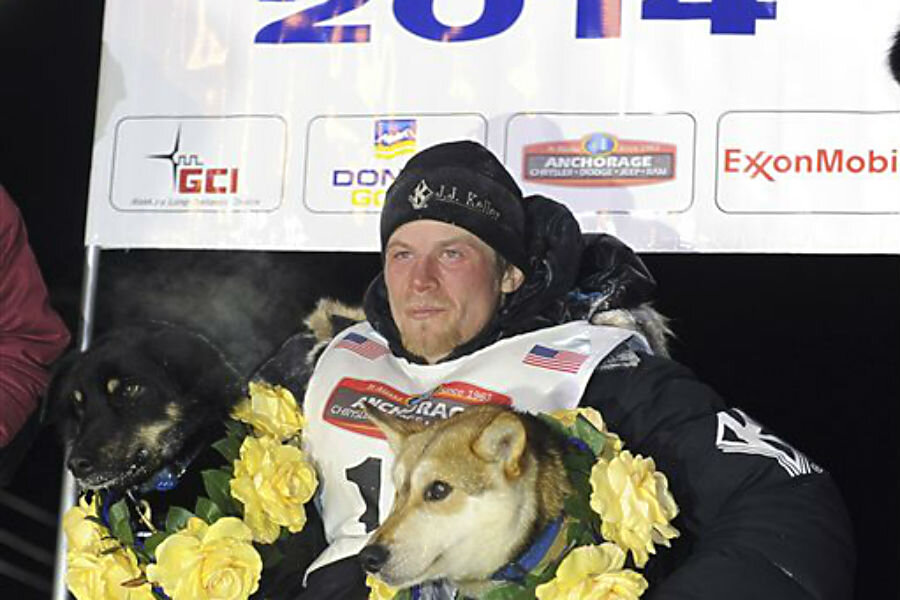Dallas Seavey wins Iditarod race, again
Loading...
| Nome, Alaska
Dallas Seavey has won his third Iditarod in the last four years, beating his father to the finish line in Nome early Wednesday after racing 1,000 miles across Alaska.
Seavey came in under the city's famous burled arch finish line to wild applause from fans lining the street, some who poured out of the doors of bars lining Front Street.
An exhausted Seavey, who also won the Iditarod Trail Sled Dog Race in 2012 and 2014, petted and hugged his dogs as he crossed the finish line, later saying, "It takes a whole team to get us here."
He said it was a very difficult trail, but "loved every second of it."
"Wins are a result of doing what we love," Seavey said, adding that he tried to keep the race fun. He said he and his father, Mitch Seavey, who won titles in 2013 and 2004, encouraged each other along the way.
Dallas Seavey was confident before the race, telling The Associated Press he had the dog team that was capable of defending his title.
He increasingly put distance between himself and the rest of the field during the latter part of the race. He held a 25-mile advantage early Tuesday — a far cry from how he won the race last year. He was running third in the 2014 Iditarod when a freak snowstorm blew the leaders out of the race, and Seavey didn't know he had won the race until a cameraman broke the news to him.
Seavey was presented $70,000 and the keys to a new pickup for winning the race. The winner's purse increased this year, and the top prize was $19,600 more than what he pocketed for winning last year's race.
Aaron Burmeister was running in third place, while Jessie Royer and Aliy Zirkle were battling for fourth. Royer and Zirkle had attempted to become the first woman to win the race since the late Susan Butcher won her fourth title in 1990.
Poor weather south of the Alaska Range this year forced the official start farther north to Fairbanks, on the northern side of the mountains. Not much snow fell south of the range, and officials said the conditions in the normally treacherous Dalzell Gorge were made even more dangerous by a lack of snow. That's the location where many mushers crashed their sleds in 2014, causing many to scratch.
A new race route also was created, with much of it run on river ice. The new route allowed new communities to serve as checkpoints, including the Athabascan community of Huslia, famed for its sprint sled dog races.
The ceremonial start went on as planned in Anchorage on March 7. Snow had to be trucked in so mushers could navigate paved streets, but there was little snow elsewhere in the city. The snow brought in for the race barely lasted the few hours it was needed because of temperatures nearing 40 degrees and rain.
A total of 78 mushers began the race March 9 in Fairbanks. Eight scratched, and one was disqualified. Two dogs have died in this year's race, including one that was hit by a car after getting loose during the ceremonial start. The other dog that died was on the team of four-time champion Lance Mackey.
Copyright 2015 The Associated Press. All rights reserved. This material may not be published, broadcast, rewritten or redistributed.







